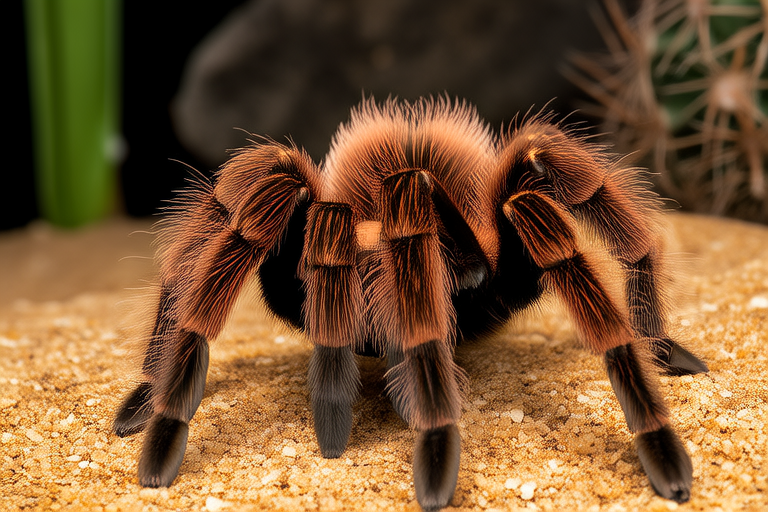Chilean Rose Tarantula Behavior Decoded: What Their Moves Mean
The Chilean rose tarantula, also known as Grammostola rosea, is one of the most popular species among tarantula enthusiasts. This medium-sized, terrestrial tarantula hails from the deserts and scrublands of Chile and Argentina. Its vibrant pinkish hues, coupled with its relatively docile nature, make it an ideal pet for beginners and seasoned arachnophiles alike. Understanding the behaviors of your Chilean rose tarantula can significantly enhance your ability to provide optimal care and ensure a long, healthy life for your pet.
Understanding Key Behaviors
Rearing Legs
One of the most noticeable behaviors of the Chilean rose tarantula is rearing its front legs. When your tarantula raises its front legs high, it is often reacting to a perceived threat or stimulus in its environment. This behavior can indicate that your tarantula is feeling defensive or curious about something in its vicinity. If you notice your tarantula frequently rearing its legs, it might be due to the presence of unfamiliar objects or other stimuli within its enclosure.
For owners, this behavior serves as a cue to check the environment for any potential stressors. Ensure that the enclosure is free from drafts, excessive light, or sudden movements that could be causing discomfort. Providing a secure, quiet environment can help reduce instances of leg rearing, indicating a more relaxed and contented tarantula.
Molting Process
Molting is a critical part of a tarantula’s lifecycle, during which it sheds its exoskeleton to grow. The process can last several days, and during this time, your tarantula will become lethargic and may refuse food. It is essential for owners to recognize the signs of impending molting to avoid handling the tarantula, which could lead to injury.
Before molting, your tarantula might spend more time upside down or on its back, which is normal and helps them prepare for the upcoming process. During molting, they will flip onto their backs and extricate themselves from their old skin. After molting, your tarantula will need time to recuperate before resuming normal activities.
Owners should provide a humid hide box for their tarantula to assist in the molting process. Ensuring the humidity levels in the enclosure are appropriate (around 70%) can also help facilitate a smooth molt. Once your tarantula has successfully molted, it will be vulnerable for a few days. Avoid disturbing it during this period to allow it to regain its strength.
Reaction to Vibrations
Chilean rose tarantulas are highly sensitive to vibrations, which they use to detect prey and potential threats. In the wild, they rely on these vibrations to locate insects and other small animals. In captivity, they may react to vibrations caused by footsteps or other disturbances in their environment.
If your tarantula suddenly becomes still or hides when you enter the room, it might be responding to vibrations. While this is a natural response, it can also indicate that your tarantula feels stressed or threatened. To minimize these reactions, try to maintain a consistent routine and avoid making loud noises near its enclosure.
Owners should also be mindful of the substrate used in the enclosure. A soft, sandy substrate can absorb vibrations, reducing the likelihood of startling your tarantula. Additionally, placing the enclosure away from high-traffic areas can create a quieter, more stable environment.
